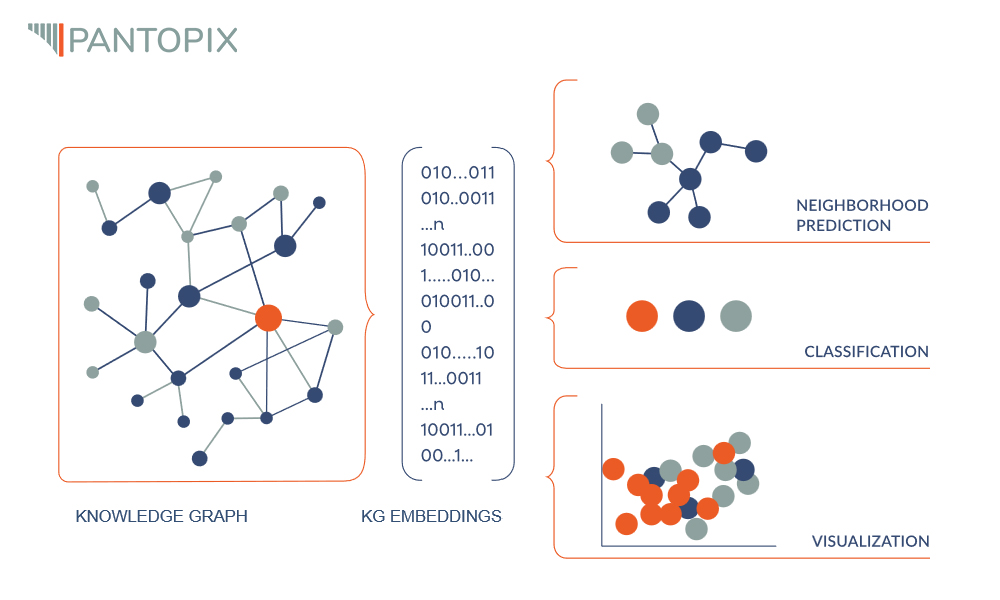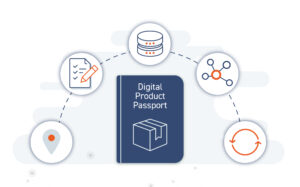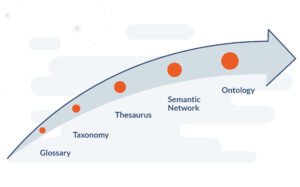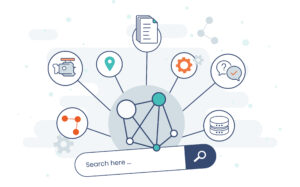Article
Knowledge Graph Embeddings
What are Knowledge Graphs?
Knowledge Graphs are collections of interlinked entities with certain defined properties or relations. It enables the virtualization and networking of information that is available in various information silos in structured, semi-structured or unstructured form. To integrate the knowledge of a company or specific company divisions, a Knowledge Graph schema is first described and modeled.
The information from the various information silos is then integrated into this model. The challenge in modeling is to identify the relevant classes and relationships that are important for future applications. Once the set of rules are defined for modelling, data sources in information silos are transformed into Knowledge Graphs.
The difficulties of knowledge graphs often lie in data incompleteness and the challenge of effectively modeling complex semantic relationships between entities.
Knowledge Graph Embeddings offer an interesting way of vector representation of information, while also helping improve the knowledge graphs to overcome incompleteness.
Knowledge Graph Embeddings in a nutshell
Knowledge graph embeddings aim to map and preserve the entities and relationships represented in knowledge graphs in a vector-based space. Embeddings make it possible to capture complex relationships between entities and relations.
There are various approaches for creating knowledge graph embeddings, including TransE, RotatE, CompGCN and many others. These models use different techniques to capture the structure and semantics of knowledge graphs and represent them in vector form. This vectored form helps us in performing further downstream tasks like Link completion and prediction.
How do Knowledge Graph Embeddings complement Knowledge Graphs?
The integration of Knowledge Graph Embedding into Knowledge Graphs offers several advantages:
- Semantic representation: Knowledge graph models can struggle to represent semantic similarities between entities as a vector. KGEs enable a more accurate representation of semantic relationships in a vector space and can thus better understand complex patterns between various resources in the Knowledge Graph.
- Data incompleteness: KGEs can be used to predict missing links and thus complete the knowledge graph.
- Relationship information: Knowledge graphs represent the relationship between two nodes. But through vector-based representation, KGEs make it possible also to represent these relations in a vector space.
The use of KGEs in knowledge graphs improves applications such as recommendation systems, question-answering systems, and search by enabling deeper semantic analysis and understanding.

Illustration: Based on KGE illustration by neoj4
We will be happy to inform you regularly about new articles.
Recording: Knowledge Graph Embeddings in the Industry
Knowledge graphs are extremely useful when we need to compare hierarchical relationships, properties and links of different data models. They allow users to analyze different data properties of data models to solve industrial problems without having to understand the semantics of the data model. In this presentation we will discuss the following:
- Using semantic relationships and properties to represent data from different sources
- Methods currently used to analyze and represent semantic relationships between different nodes in knowledge graphs
- Using these methods to solve various problems in industry, with proven examples

DPP in practice: How the digital product passport is becoming the driving force behind the information hub
To prevent the digital product passport from becoming yet another data container, companies need to rethink their information strategy.

Meaning of semantics in technical communication.
“Today, semantics is frequently discussed, especially in connection with terms like ‘Semantic Web’ or ‘Semantic Knowledge Management.’ But what exactly does semantics mean, and how relevant is it for technical documentation?”

Knowledge Graphs in Technical Communication: Definition, Use and Benefits
Knowledge graphs virtualize and connect information that exists in information silos in structured and unstructured forms.
Contact us
Prof. Dr. Martin Ley
Partner and Senior Consultant
- martin.ley@pantopix.com

